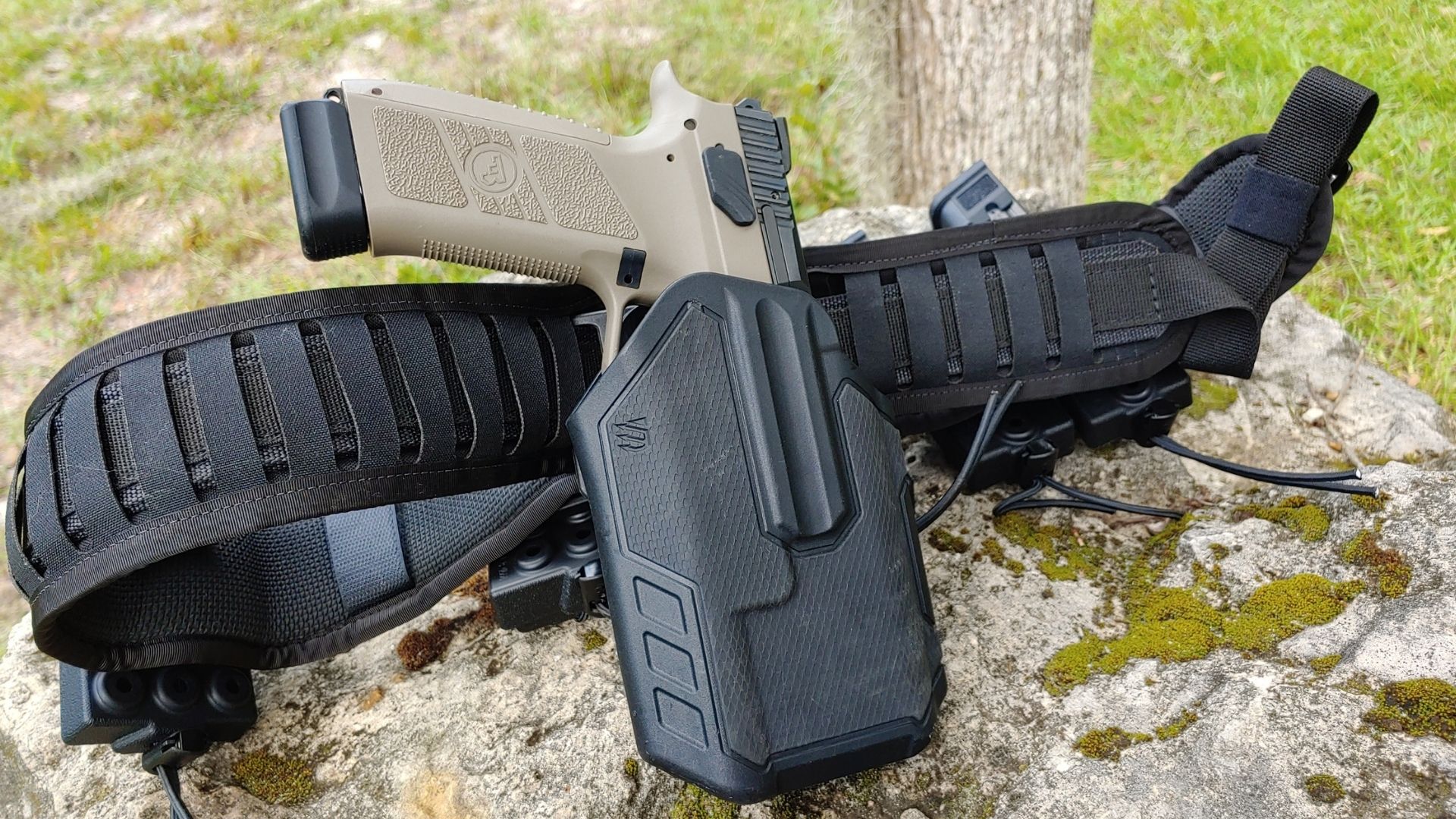Selecting the right firearm holster is a critical decision for anyone who carries a firearm, whether for personal protection, professional duty, or competitive shooting. A holster not only keeps the firearm secure and accessible but also plays a significant role in the safety and effectiveness of its user. As the demand for firearms and carrying them responsibly grows, so does the innovation in holster design and technology. Here we discuss about the advanced considerations for selecting a firearm holster, beyond the basic criteria of fit, retention, and comfort. It aims to provide insights into how different factors, such as material, carry position, concealment, drawing efficiency, and legal considerations, impact the choice of a holster.
Material: Durability Meets Comfort
The material of a holster significantly influences its durability, comfort, and performance. Traditional materials like leather have been favored for their durability and aesthetic appeal. Leather holsters mold to the firearm over time, offering a custom fit. However, they require maintenance to keep them in good condition and can be affected by weather conditions.
Modern materials such as Kydex and other thermoplastics have gained popularity for their resilience, maintenance ease, and ability to retain their shape under various environmental conditions. These materials also enable a faster draw because they don’t cling to the firearm. Balancing the durability and comfort provided by different materials is essential, especially for those who carry their firearms daily.
Carry Position: A Tactical Choice
The carry position of a holster affects concealment, accessibility, and comfort. Common positions include inside-the-waistband (IWB), outside-the-waistband (OWB), shoulder, ankle, and appendix carry. Each has its advantages and considerations:
- IWB holsters are popular for concealed carry as they offer excellent concealment under minimal cover garments.
- OWB holsters are preferred for open carry or when concealment is not a priority, providing ease of draw and comfort.
- Shoulder holsters are suitable for individuals who spend a lot of time sitting or driving.
- Ankle holsters are considered for backup guns.
- Appendix carry offers quick access but requires careful consideration regarding comfort and safety.
The choice of carry position is influenced by the individual’s body type, daily activities, and the clothing they typically wear.
Concealment vs. Accessibility
For many, the primary purpose of carrying a concealed weapon is personal protection. Therefore, the balance between concealment and accessibility is a critical consideration. A holster must offer sufficient concealment to prevent unwanted attention while allowing for a quick and efficient draw when necessary. This balance is influenced by the holster design, carry position, and the wearer’s clothing. Holsters with adjustable cant (angle) and ride height can improve both concealment and accessibility.
Drawing Efficiency and Retention
A holster must secure the firearm in place while allowing for a smooth, fast draw. Retention mechanisms vary from passive retention (friction fit) to active retention (mechanisms that must be manually disengaged). The level of retention required is often determined by the individual’s activity level and the environments in which they carry their firearm. For instance, law enforcement and military personnel may require holsters with higher retention levels due to the physical demands of their duties.
Drawing efficiency is also affected by the holster’s design and its position on the body. Training and practice with the chosen holster are paramount to ensuring that the wearer can draw their firearm quickly and safely under stress.
Legal Considerations
Legal requirements for carrying a firearm vary widely by jurisdiction and can influence holster selection. For example, some areas may mandate concealed carry, affecting the type of holster and carry position chosen. It’s essential to be aware of and comply with local laws and regulations regarding firearm carry, including any specifications for holsters.
Future Innovations and Personalization
The evolution of holster technology continues as manufacturers seek to improve safety, comfort, and efficiency. Innovations such as adjustable retention, modular systems that adapt to different carry positions, and holsters designed for specific tasks or environments are becoming more prevalent. The trend towards customization and personalization is also evident, with options for custom-molded holsters that fit the exact model of firearm, personalized designs, and integrated technology for enhanced security and quick access. A notable example of such innovation can be found in Blackhawk holsters, which are renowned for their robust design, safety features, and adaptability to various carrying needs.
Conclusion
Selecting the right holster is a nuanced process that extends beyond basic considerations to include a deep understanding of the individual’s specific needs, lifestyle, and legal obligations. The advancements in materials, design, and technology offer a wide range of options, catering to diverse preferences and requirements. By carefully evaluating these advanced considerations, individuals can choose a holster that provides the perfect balance of safety, comfort, and performance, ensuring that they are prepared and protected in any situation.
